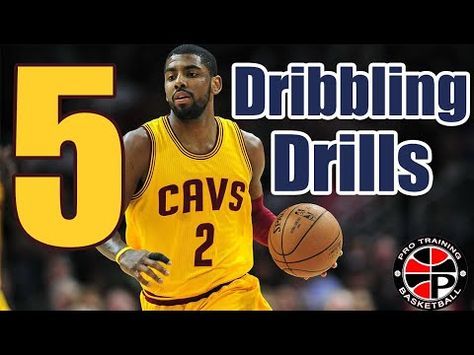Home »
Misc »
How to get really good handles in basketball
How to get really good handles in basketball
5 Things You Need To Know To Be a Great Ball Handler
By Jeff Haefner
You can be an extremely effective ball handler by knowing and practicing 5 things. Most players and coaches make
things too complicated. But dribbling effectively is simple. You don't need lots of moves. You just need EFFECTIVE moves.
Here's all you need to know to be effective at any level.
1 - You need to develop a feel for the basketball.
Developing a feel for the ball consists of drills that are stationary and slow moving. You will improve your hand-eye coordination, hand quickness, ambidexterity, throwing, catching and other important aspects of ball handling.
These drills consists of the Maravich series, one-ball dribbling, one-ball dribbling through cones, two-ball dribbling, two-ball dribbling through cones, tennis ball dribbling, and the Steve Nash passing series.![]()
These drills are also great to put at the beginning of your warm up as a stepping stone to more intense drills.
A huge mistake that many players and coaches make is that they spend too much time on this. While it is important, especially for beginners, limit yourself to 5 to 6 minutes of each practice. The reasoning is that you can get very good at these drills, but you neglect the components below, you won't have the ability to handle game situations. If you can dribble 3 basketballs while juggling 5 tennis balls at the same time, it looks cool and it is a neat circus trick that is great for marketing, but it is a circus trick. It is not going to make you a better basketball player. The majority of your ball handling should be functional which means that they simulate game-like situations. Can you get down the court in 3 to 4 dribbles with either hand? Can you stop on a dime? Can you change speed and change directions like Chris Paul?
If you are able to dribble 3 balls and juggle 5 tennis balls at the same time, I would say that your hand-eye coordination, dexterity, and hand quickness are extremely good and you probably don't need to focus on them any more.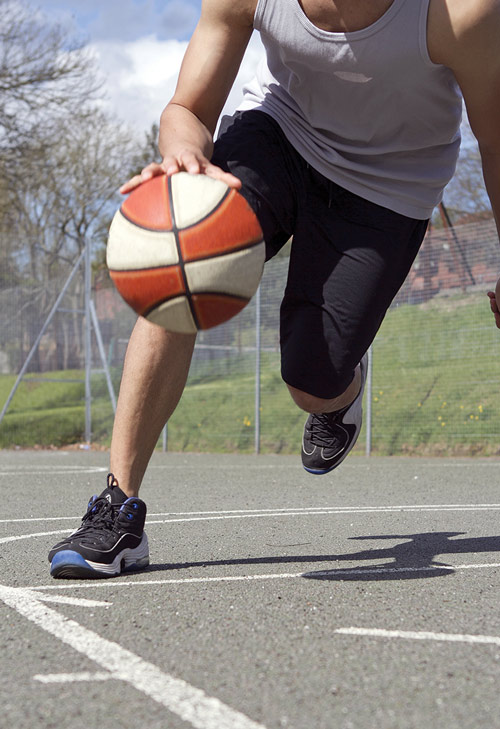 You probably should spend more time on shooting, footwork, athleticism, and functional ball handling.
You probably should spend more time on shooting, footwork, athleticism, and functional ball handling.
2 - You must be able to dribble the ball down the court at any speed (all the way from walking up to sprinting) with both hands with your head up.
Pretty simple but important, right? You can simply dribble up and down the court at different speeds.
3 - You must be able to change your pace.
It's good to incorporate change of pace in your dribbling drills.
Chris Paul is the
expert at changing speeds (pace). That allows him to get the defender off balance.
Practice changing the pace from walking, slow, medium, fast, and full speed. You can change the pace from slow to fast, medium to full speed, and any
other combinations you can imagine.
4 - You must be able to dribble while moving backwards.
So now instead of going forward, you need to be able to back out of traffic and so on. That's where the
back up dribble comes into play.
Simply, get in a position where you are protecting the ball and shuffle forwards and backwards up and down the court.
That's where the
back up dribble comes into play.
Simply, get in a position where you are protecting the ball and shuffle forwards and backwards up and down the court.
Next, you can practice running forward at a faster speed, come to hockey stop, and shuffle a couple of steps backwards.
Mix it up so you can handle any situation.
5 - You must have a primary dribble move and a counter dribble move.
If you perfect a go-to move that's very difficult to stop, good defenders will adjust to stop it. That's when you add your counter move to completely
keep the defender guessing.
I prefer the cross over as the primary move and the inside out as the counter move. You might use the hesitation move and the crossover.
That's it! Perfect those five things and when it comes to dribbling, you'll have the dribbling ability to handle almost any situation. Should you also
practice other things for ball handling? Sure. Now do you need apply the technical skills to competitive drills to handle game situations like transition, ball screens, handling traps, etc.? Yes. Do you need to improve your athleticism to make you a better player in every aspect of your game? Yes. But I'm telling you, that these are five extremely effective methods to give you the technical skill to handle any situation.
Now do you need apply the technical skills to competitive drills to handle game situations like transition, ball screens, handling traps, etc.? Yes. Do you need to improve your athleticism to make you a better player in every aspect of your game? Yes. But I'm telling you, that these are five extremely effective methods to give you the technical skill to handle any situation.
You can use the back up dribble all the time -- you use it when approaching a trap, when approaching defensive traffic, when getting cut off in the lane, when breaking the press, when breaking a player down one on one, etc.
You can then incorporate the cross over in lots of situations. If you advance the ball and get cut off you can back up dribble and then cross over to break down your man and blow by him. You can cross over to change directions and bring the ball to the other side of the court. You can cross over to the passing angle to your teammate. You can cross over to split a ball screen.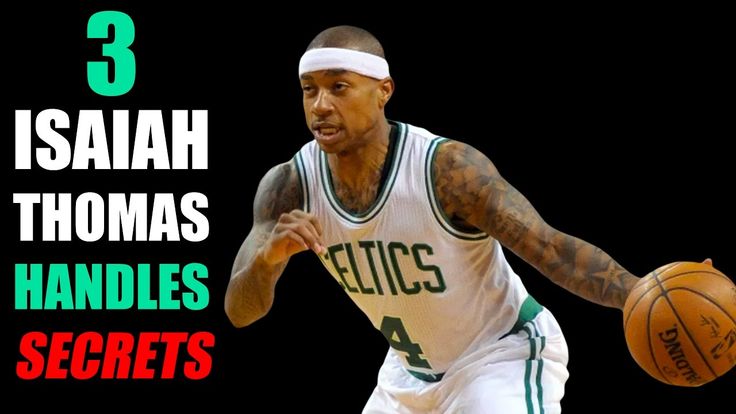 You can cross over on the fast break to get by the defender. You can cross over to eventually set up your counter move (the inside out). So next time instead of crossing over, fake out the defender by giving the inside out move and then blow by the defender.
You can cross over on the fast break to get by the defender. You can cross over to eventually set up your counter move (the inside out). So next time instead of crossing over, fake out the defender by giving the inside out move and then blow by the defender.
You still need to practice a lot, but I think this will simplify your life greatly by focusing on a few really effective dribbling techniques instead of
trying to practice all kinds of moves and techniques that don't really help. The techniques above are the the most effective dribbling moves that I know.
How To Become A Great Ball Handler
If you'd like to become a great ball handler, check out the Progressive Ball Handling & Footwork Workouts App.
It provides a step-by-step process with professionally designed videos and workouts. It has over 200 drills and 24 levels of workouts.
What do you think? Please leave your thoughts and comments below.
How do I improve on.. everything to do with handles? : Basketball
Hello, Reddit. I'm not entirely sure where to start, so I'll just put it all out there.
I'm a freshman in high school at the moment, and was home schooled for the majority of my lifetime. During this time, I never really played any sport. I do martial arts, and have been doing so for many years, so I'm not deprived of physical activity, but my natural athleticism is practically non-existent having never been nurtured, not even as a young kid (never went out much and did anything)
So, fast forward to modern day, I've been placed into public school for the first time. I've adjusted really well, but the thing I'm here for is also the thing I have the most trouble in- basketball. I'm 6'1 and 145lbs, 15 years old. Initially, a lot of other teenagers thought I would be an amazing basketball player because of my height and build coinciding a lot with what you would expect out of a good teenage ball player.
But.. I absolutely suck. Don't get me wrong, I'm not bullied for it or anything, a lot of people are really nice and try to give me advice to improve my game. But, most of these people have years of experience and practice, even at least just playing friendly games with people around the neighborhood, which is something I never did.
I'm in good health, my father was a personal trainer for many years and has helped me a lot with staying in shape. I'm fit, tall, and thin, but I have very little skill. I lack in a lot of areas.
Now that all of that mouthful is out of the way, I'll get into what exactly I'm asking for.
I'm not trying to be NBA level or anything, I just want to be decent and maybe at least play on my school's team at some point. I've found that I really enjoy watching and playing the game, even when I'm getting curb-stomped like I normally do. I have a lot of fun with basketball, but I'd have more fun if I wasn't so absolutely horrible at it.
From what advice people have given me, my biggest problem is my handling. My game sense is okay, I'm able to keep up with the ball and know pretty well where it will end up, and position myself likewise. My shooting is alright, and I can normally sink about half of my shots from the 3. On defense, I'd say I'm really good and not lacking at all there (but this may very well be naive, as the majority of the people I'm guarding are at minimal four inches shorter than me.)
My game sense is okay, I'm able to keep up with the ball and know pretty well where it will end up, and position myself likewise. My shooting is alright, and I can normally sink about half of my shots from the 3. On defense, I'd say I'm really good and not lacking at all there (but this may very well be naive, as the majority of the people I'm guarding are at minimal four inches shorter than me.)
But, well, I can't dribble worth anything. I've learned to keep my eyes up and not stare at the ball. I can pass between both hands fairly well, and I do pretty okay on my own. But when anyone guards me I tend to either freeze up or get the ball stolen from me very easily. I can't really cross the ball between my legs or anything like that, I don't have any moves apart from just very practical dribbling. My handles are like a little kid's. I'm very dedicated to learning and practicing, but I just don't know where to start.
If you took the time to read the post, thank you so much. If you would drop a response and give me some advice or drills to help improve my handles, that would be awesome.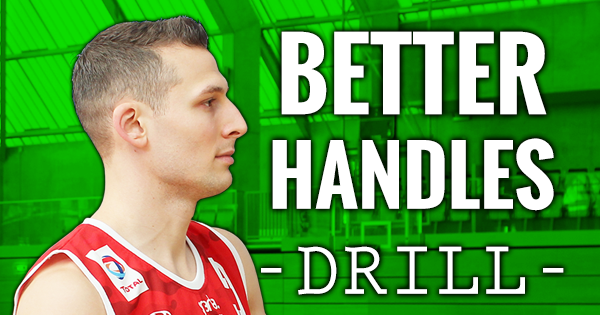 Just keep in mind I'm not even close to the level of most other teenagers. Also, just quitting is not an option. I'm dedicated to improving one way or another, I just need a helping hand to shove me in the right direction. I think with practice and help I really could be at least an average player.
Just keep in mind I'm not even close to the level of most other teenagers. Also, just quitting is not an option. I'm dedicated to improving one way or another, I just need a helping hand to shove me in the right direction. I think with practice and help I really could be at least an average player.
How to get results in basketball
"Any experienced basketball player will tell you that there is a huge difference between learning and applying technique!"
Online basketball expert, national level player
Any experienced basketball player will tell you that there is a huge difference between learning and applying technique! It's only natural that beginners (or those who are returning to play after a long break) get caught up in the game on the court - all you hear is "rush...to the rim...lead...use the whole court". All your strength is focused on not making mistakes, in order to know that you do not let your team down.:no_upscale()/cdn.vox-cdn.com/uploads/chorus_image/image/53487411/CollegeRosterScreen7_zpsn2zs090k.0.jpg) What exactly are you doing? Positions? rebounds? Blocks? Intercepts? This is really important, but there are other great ways to add value to the team. Take a break from your own achievements - this will allow you to become a more valuable player. This article does not contain obvious advice on keeping fit, working on speed, dribbling, serving, etc. But here you will find 5 ways to become more efficient from the very next game. You are much closer to success than you think!
What exactly are you doing? Positions? rebounds? Blocks? Intercepts? This is really important, but there are other great ways to add value to the team. Take a break from your own achievements - this will allow you to become a more valuable player. This article does not contain obvious advice on keeping fit, working on speed, dribbling, serving, etc. But here you will find 5 ways to become more efficient from the very next game. You are much closer to success than you think!
The main reason basketball players lose passes and miss comfortable rebounds is because their hands aren't ready. This seems obvious, but still deserves special attention. Your hands should always be ready to receive the pass, and your palms are directed towards the ball - the server will perceive them as a target.
Here are a few exercises you can do during your warm-up to prepare for the game:
POWER DRIBLING HITTING THE BALL
The correct execution of passes gives confidence on the site.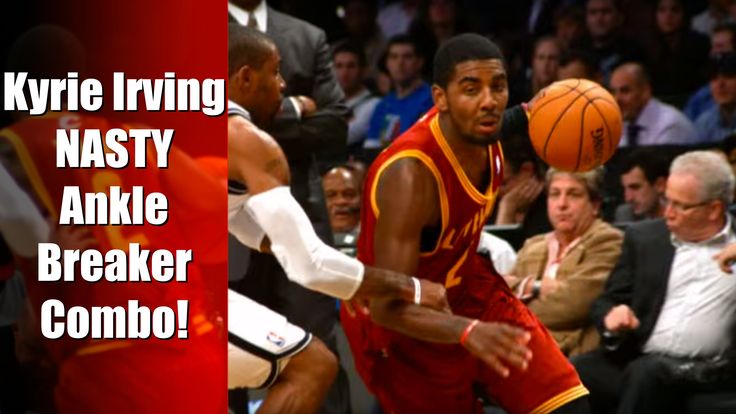 However, there are a few things to keep in mind here.
However, there are a few things to keep in mind here.
The basics of technique play a huge role for beginners. Practice a 2-handed chest pass and a bounce pass. After that, you can move on to other methods.
Don't pass just for the sake of passing. Determine who can take the pass, who can't, (identify strong offensive players, weak defenders) and go for it!
IMPORTANT: DO NOT KEEP THE BALL - make passes and passes will be made to you.
Low, wide stance: There are only 2 cases where you should deviate from this rule - this is rebounding and covering the ball. In any other situation, it is important that the stance is low: straight back, bent knees, feet shoulder-width apart, arms extended forward. In this position, you are firmly on your feet and ready to respond to passes. It is very important to be between the defender and the ring.
This is the main way to participate in offense without the ball! If you are a beginner basketball player, then you will most likely score infrequently. Perform screenings to:
Perform screenings to:
- give partners the opportunity to open up
- open yourself
Shield the dribbler, shield your opponents without the ball (to help your teammates) and keep moving. The ball will find its way to you.
SITE 9 LOCATION0002 There are 8 main points on the court that attackers usually occupy to attack. Simple arithmetic suggests that at least 4 of them are free at this moment. Make sure you don't get too close to the rest of your team. Why?
- This allows you to strengthen the attack - so it will be more difficult for defenders to keep track of all opponents;
- You will be in a better position to shoot/pass/dribble to the basket when you receive the ball.
Do not forget that your hands should always be ready.
Try to consciously change positions (moving quickly between two points on the court) so that you get used to playing from different points.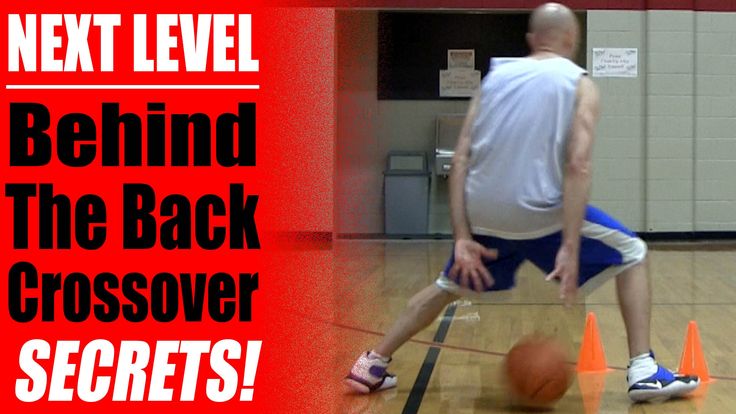 A conscious change of position will bring you the location of your team, but the enemy defender will clearly dislike you!
A conscious change of position will bring you the location of your team, but the enemy defender will clearly dislike you!
This is certainly not a complete list of tips, but rest assured that if you follow them, your next game will be better than the last!
Forward!
Ten questions and answers about basketball training from Vasily Prokofiev
Hello, dear visitors of the website basketball-training.org.ua ! Today we have a very interesting Q&A article about basketball training from a good friend of mine who now lives and trains in the USA. I will say more - he is already playing for ... But, by the way, why get ahead of yourself, he will tell everything himself.
Today we'll be looking at sports nutrition, using the gym for basketball training, conditioning for basketball players, injury field balance and recovery, jumping, of course, and much more. Let's get started!
Maxim: In two or three words, tell us about yourself what has happened since the publication of our first interview (Interview #1). I know you're currently in the States and playing for college, right?
I know you're currently in the States and playing for college, right?
Vasily: My name is Vasily Prokofiev, I am 23 years old, born and raised in the city of Syzran, Samara region. Since January 2012, he went to play in the USA. The first season he played for the school, then moved to college. Last year, at the end of the basketball season, he worked as an assistant conditioning coach in college. Mostly worked with basketball players, American football players and track and field athletes. I am currently transferring to a university in Tennessee as they offered me a scholarship there. I maintain a blog on the slamdunk.ru website, as well as a group on the topic of training and self-improvement (https://vk.com/basi_training).
Maxim: Is it possible to achieve everything by yourself or does a coach have to be nearby? My humble opinion is this: the so-called fundamentals can be learned from videos that are full on the net (Better Basketball, Ganon Baker and others). But to reach a fundamentally new level, you need a person who will see from the outside what you yourself do not see (mistakes, weaknesses and strengths). What do you think?
But to reach a fundamentally new level, you need a person who will see from the outside what you yourself do not see (mistakes, weaknesses and strengths). What do you think?
Vasily: I think that you can reach a certain level on your own. You can always progress on your own. There are two main conditions here: the desire to learn and learn something new and the actions themselves. You can record your workouts and games on video, and then analyze it yourself, but having a knowledgeable person nearby who will look at you from the side and point out shortcomings and mistakes will only accelerate progress.
Max: If you completely ignore individual training programs, personal and very secret coaching practices and fundamental exercises, it turns out that most players perform very similar exercises for their development. And here a logical question arises: exercises from what other sport can be supplemented with purely basketball training? For example, I know that for better footwork, centers often resort to the help of boxing coaches (footwork is oh so important there).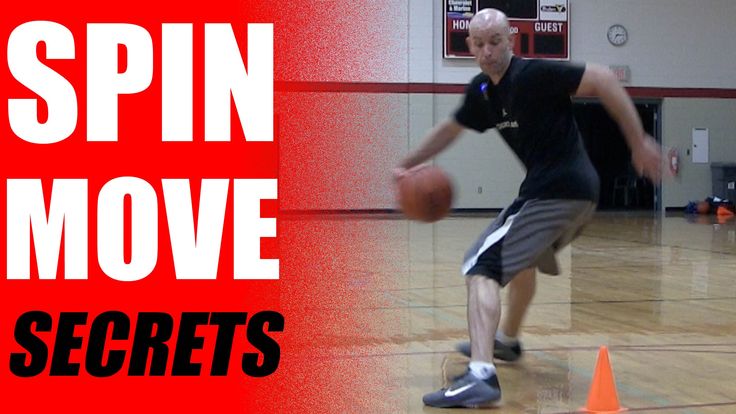 I also heard about American football.
I also heard about American football.
Vasily: I believe that doing more than one sport on a regular basis at an early age only contributes to the comprehensive development of the child. If we talk about an adult player, then exercises and principles from different sports should be added to training. My two choices are boxing and American football. In the summer of 2012, I boxed with a trainer several times a week. The goal is to improve hand function. In the summer of 2013, all the footwork exercises in my workout were taken from the principles of American football running back training. The main goal is to improve footwork. If we talk about specific examples of exercises from American football, then these are various kinds of jerks with a sharp change in direction (cuts). There are a lot of variations and now they can be viewed on the Internet, but the simplest is zigzag jerks. Particular attention is paid to the work of the legs when stopping and changing direction.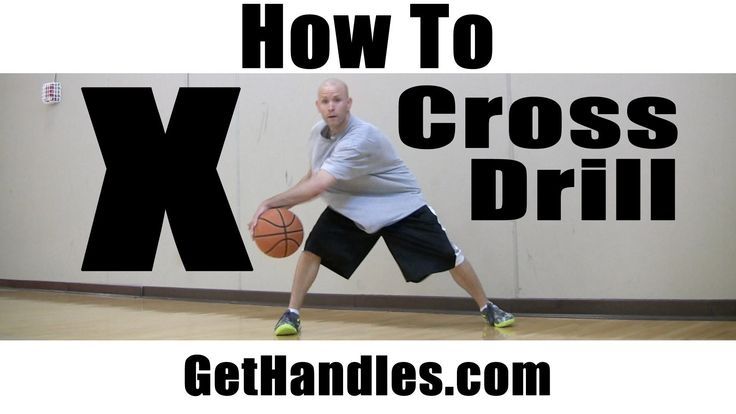 As a rule, these are three mincing steps in place and a jerk in the opposite direction.
As a rule, these are three mincing steps in place and a jerk in the opposite direction.
You should not copy the whole workout, each sport has its own specifics, but the basic principles are definitely worth borrowing. The video shows my training with the American football team after the end of the basketball season last year.
[youtube]rjyhClRcRZk[/youtube]
Maxim: Let's talk a little about sports nutrition. There is a lot of it now and often novice athletes simply do not understand: what, how and when to take, which in turn leads to the formation of the opinion "sports nutrition = steroids = kill the liver / kidneys / heart" or to the opinion "sports nutrition is evil, I eat better cottage cheese". Tell us about your vision of sports nutrition for a basketball player: for gaining mass, for dropping it, and simply for faster recovery between games and training.
Vasily: Cottage cheese is good, of course, and I miss our cottage cheese, because there is no such thing here.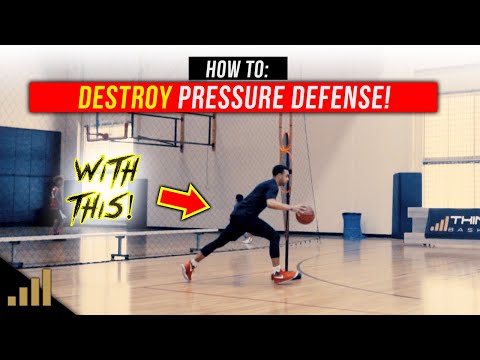 But not the best way to get protein immediately after a workout. The reason is casein protein, which means that it takes a long time to digest.
But not the best way to get protein immediately after a workout. The reason is casein protein, which means that it takes a long time to digest.
If you play sports at a serious level, then it is difficult to maintain the right balance of proteins, fats, carbohydrates, vitamins and minerals, so many people use sports nutrition. I am one of them. To achieve balance, you must first analyze your diet. After that, you will be able to see where you have surpluses and where there are shortcomings and understand what needs to be changed. The first time I did something like this was in the US. As it turned out, I had little Vitamin E from food and unsaturated omega-3 fatty acids, which I compensated with nutritional supplements. For any athlete who trains at least 5-6 times a week, I would advise adding Omega-3s and a multivitamin complex to your diet, along with amino acids.
As an example, what I take from sports nutrition when I have about 15 workouts per week. Before you start taking anything, I recommend consulting with a specialist.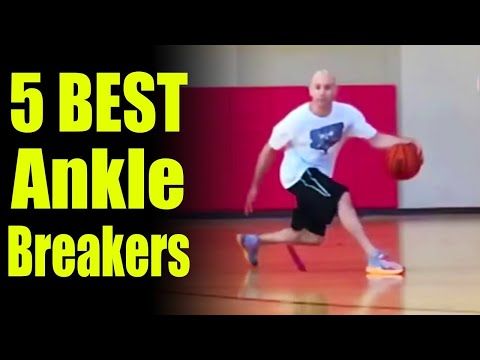
- Amino Acids - Universal 100% Beef Aminos - 1/2 serving 2 hours before first workout, 1 serving immediately after first workout, 1/2 serving immediately after second workout.
- Amino Acids - Muscle Tech Amino Build - sometimes during workout.
- Multivitamin - Vitaline MultiVit Care - 1-2 times a day with meals.
- Omega-3 - Vitaline MegaPlus - 2 times a day with meals.
- Niacinamide - GNC Niacinamide - 1 time per day in the evening after meals.
- Optimum Nutrition Whey Isolate once a day. Usually after a workout.
To gain muscle mass here, all my trainers advise to consume about 2 grams of protein per 1 kg of body weight per day. All this will need to be divided into 3-5 meals. Also, do not forget about snacks during the day. If you set out to gain muscle mass, then you should not feel hungry during the day. Of the usual products, I almost always carry at least 1 banana with me. Plus, I often take a small package of tuna instead of a protein mixture.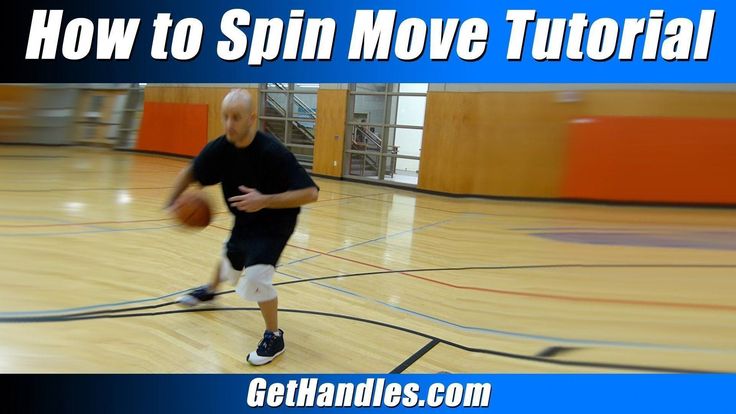 It saves.
It saves.
Improve recovery and body function low sugar intake. You should not consume more than 50 grams of sugar per day. All sweets can and should be replaced with fruits, vegetables and nuts. The role of vegetables, by the way, often remains underestimated. In addition to a faster acceleration, a small amount of sugar in the diet will improve the functioning of the immune system, reduce headaches and drowsiness. All this has been proven in practice.
Maxim: Now about the gym. As always, we have 2 groups of people: the first screams that without a gym you can’t achieve good results, and the second - that the gym is not really needed, you can achieve good results by working exclusively with your weight. I would like to hear your vision of the development of a basketball player in the context of visits to the gym.
Vasily: Of course, it is possible to do without free weights (barbell, dumbbells, weights), but it is difficult.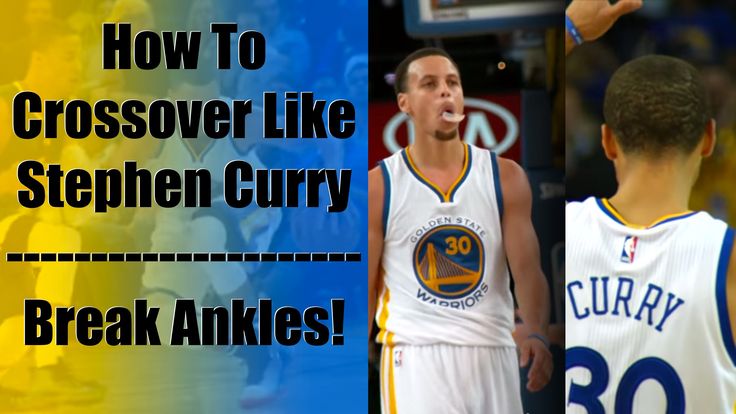 Yes, you can only train with your own weight and add resistance in the form of rubber (resistance band), but it will be more effective to add free weights to this. The video shows a simple example of training with your own weight.
Yes, you can only train with your own weight and add resistance in the form of rubber (resistance band), but it will be more effective to add free weights to this. The video shows a simple example of training with your own weight.
[youtube]RX7PPbSomkc[/youtube]
For comparison, here is a small cut of GPP workouts in July 2013, in which I actively used resistance exercises.
[youtube]FkiN8DpnPjU[/youtube]
Max: What are the key differences in conditioning training for defenders, forwards and centers? Is there a fundamental difference between the choice of "additional exercises" for small (1-2 numbers) and big (4-5 numbers) players?
Vasily: There should not be any special differences for one reason: regardless of whether you are point guard or center, you have one goal - to run faster, jump higher, become more enduring and stronger.
Yes, there may be a difference in the choice of those additional exercises, but it depends on the individual needs of each player, because I think small players will not interfere with the ability to fight in the post (center position), and the big ones the ability to press all over the court in a low protective stand.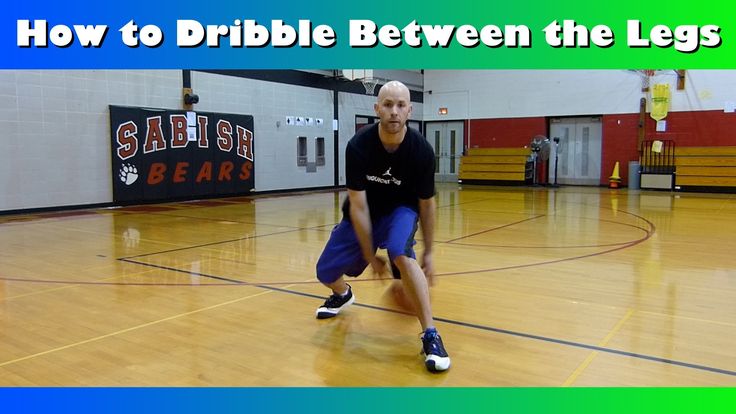
Max: A very important thing in any sport is the ability to maintain balance in game situations. This will allow you to shoot even if you are pushed, score 2 with a foul, and just feel more confident in passes, on turns and when performing feints. But unfortunately, it is precisely the balance in the Youth Sports School (which I visited so precisely) that they devote very little time to (read: they don’t devote it at all). Tell me a little about balance, its importance and exercises that can improve it.
Vasily: Balance is one of those aspects that I deal with almost every day. In contact sports, it is very important for several reasons: reducing the risk of future injuries and the ability to maintain balance despite external factors. There are enough exercises. Here everything depends on the imagination. I would divide the balance work into several levels of difficulty:
- Standing on one leg on the floor.
- Standing on one leg on an unstable surface (the surface can only move in one plane).

- Standing on one leg on the floor with eyes closed.
- Standing on one leg on an unstable surface (the surface can move in several planes at the same time). The easiest way is a towel folded several times, the more difficult way is a BOSU ball.
- Standing on an unstable surface with eyes closed.
- Standing on several unstable surfaces at the same time (one on top of the other) and so on.
This video is an example of one of my leg workouts.
[youtube]kOP2jhejDik[/youtube]
A good balance exercise that you can do at home with any ball available is the squat.
[youtube]V-yaUwEIS0[/youtube]
Max: About restoration. After all, basketball is a contact sport, and injuries (both serious and microtraumas) are an integral part of it. What can and should be done to minimize the risk of injury; And what can be done to prevent the recurrence of old sores?
Vasily: As I have already said, balance work reduces the risk of injury. In addition, everything will already depend on the program of work with weights, recovery and nutrition.
In addition, everything will already depend on the program of work with weights, recovery and nutrition.
As far as restoration is concerned, many here do not pay due attention to it. Massage, stretching and strengthening exercises should be a top priority in your free time. It takes me 30 minutes to 1 hour a day. For massage, I use both a roller (Trigger Point Foam Roller) and a percussion electric massager, plus I already do acupressure with my hands. After training, so-called adhesions form at the site of micro-ruptures of muscle fibers, which, if left unattended, can contribute to the appearance of pain in the joints or at the points of attachment of muscles, ligaments and tendons, and in the future this can lead to serious injuries.
Many players don't even think about strengthening their ligaments after injury. A simple chain example:
- You sprained your leg (sprained your ankle ligaments).
- The pain disappeared after a while. You started exercising again and got the same injury again.
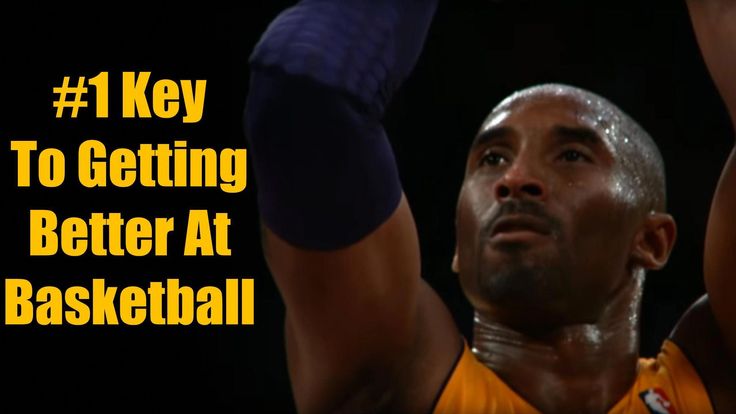
- The pain went away again after a while, but all you did was smear your ankle with ointment. Perhaps the ointment somehow helps to relieve swelling, but it definitely does not strengthen the ligaments, which means the ligaments remain just as weak.
- The weakness of the ankle ligament begins to compensate for the gastrocnemius muscle, thereby overloading it.
- Restore Balance now tears the back of the thigh, now it is also overloaded. With such an overload, discomfort in the knee can also occur, which in turn can lead to a displacement of the pelvis.
If, on the other hand, to prevent re-injury, a player begins to wear ankle protection, then this does not strengthen the ligaments in any way, but rather even weakens them. The same thing happens with taping. Therefore, in the United States, in the offices of sports doctors (athletic trainers) of teams, there are signs like “A prerequisite for taping is to perform strengthening exercises.”
For a fresh injury, the RICE rule should be followed for the first few days until the tumor is removed.
- Rest (minimum load on the injured area,
- Ice (ice for 15-20 minutes every hour and a half),
- Compression (fix the injured area so as not to aggravate the injury),
- Elevation (to remove the tumor - keep the injured area above the level of the heart for 10 minutes every 2-3 hours, this stimulates the outflow of blood).
Max: If you look closely at the basic elements of outplaying a defender, then in 90% of cases, outplaying occurs through the first step. Explosive, sharp, fast. In fact, if you train this element, then it will not be difficult to beat most opponents (we are not talking about defense at a distance of 1.5-2 meters, from which you can just shoot the opponent’s ring). Do you agree with the statement and what exercises can be used to develop the first step?
Vasily: I don't quite agree with this. If you have a very fast first step but can't read the defense, you won't get very far, but the first step certainly gives you an edge.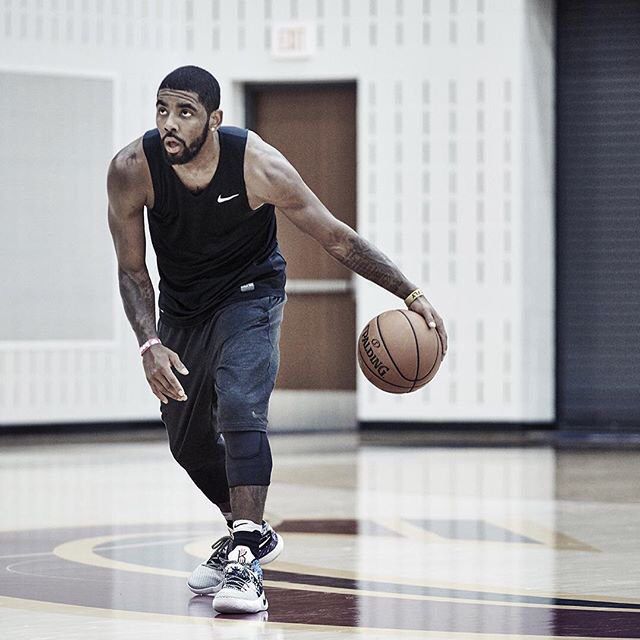 There are many exercises to improve this element. In this case, I am more attracted to work with resistance (resistance band) - stepping forward and backward, moving in a protective stance, jabs (showing off). Also, the ladder has a good effect on the work of the legs, and therefore on the first step. The only remark on the ladder is that you should not do it more than 4 times a week. Otherwise, there will not be enough time to recover between such workouts. Another good way to use the block simulator for our purposes.
There are many exercises to improve this element. In this case, I am more attracted to work with resistance (resistance band) - stepping forward and backward, moving in a protective stance, jabs (showing off). Also, the ladder has a good effect on the work of the legs, and therefore on the first step. The only remark on the ladder is that you should not do it more than 4 times a week. Otherwise, there will not be enough time to recover between such workouts. Another good way to use the block simulator for our purposes.
[youtube]5dy86l8oFY4[/youtube]
Maxim: My favorite is about the jump. I believe that jump development is an integral part of basketball, but not a key one. Those. the jump, as well as speed, quickness, accuracy of the throw and other elements of the game must progress in parallel. And what do you think? And of course, is there a "magic pill/exercise" that will make you fly?
Vasily: So we got to the most interesting part! Everyone wants to know the very exercise that will make the jump more than a meter.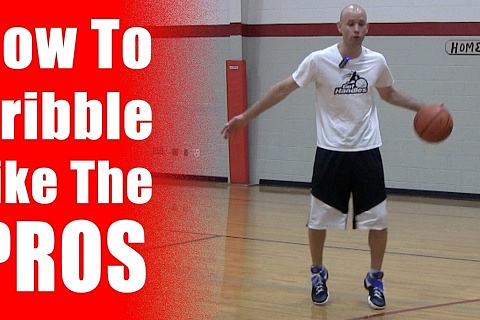 Unfortunately, there is no such thing. I personally do not set a goal for myself to increase the jump, but sometimes it is interesting to read what they write. Someone says that you need to pump calves, then you will jump high, someone says that the press is the main thing.
Unfortunately, there is no such thing. I personally do not set a goal for myself to increase the jump, but sometimes it is interesting to read what they write. Someone says that you need to pump calves, then you will jump high, someone says that the press is the main thing.
Jump is a complex movement that includes the work of the whole body. If we imagine the mechanics of the jump, then in certain stages not only the legs work, but also the muscles of the torso. So, everything needs to be trained. In my opinion, if you are an athlete, then you need to pay a minimum of attention to isolation exercises and exercises in simulators. There will be no such movement in the game when you only contract the quadriceps femoris or something else. Also, I can't imagine the movements in the game when you move strictly in one plane. An example is the transfer with two hands from the chest and the bench press in the Smith machine. To achieve maximum power when passing, the arms will work in more than one direction, and in the Smith machine, the bar can only move up and down.
As for the exercise to increase the jump, here the leaders were, are and will be squats and lunges and their various variations. One of them is rocket squats. I often did them with athletes. An ordinary squat with the only caveat - at the bottom point you linger for 3 seconds, then straighten up sharply. I clarify, straighten up, not jump. You can stand up on your toes. If you jump or get up abruptly from your toes back to your heels, then the load on the spine will increase (and you should be careful with it).
And yet, it's time to understand that there is nothing revolutionary that will allow you to achieve results in a matter of time. There is only one answer - work on yourself.
Do you want to be fast and strong? The recipe is simple. Sprints, explosive reps, footwork, resistance training, unstable ground. Regularly.
Maxim: In conclusion, a little psychology and motivation: I often notice that two or three words of criticism at the beginning of a match against a partner can lead to the fact that he falls into the wrong place, and cannot show his usual level of play . How do you feel about criticism during the game / timeout: is it necessary to criticize partners (bad pass; untimely pass; didn’t give at all; didn’t improve on defense ... the list goes on indefinitely) immediately after an error, or everything is discussed later. And how not to break if you immediately heard everything that they think about your actions.
How do you feel about criticism during the game / timeout: is it necessary to criticize partners (bad pass; untimely pass; didn’t give at all; didn’t improve on defense ... the list goes on indefinitely) immediately after an error, or everything is discussed later. And how not to break if you immediately heard everything that they think about your actions.
Vasily: I'm fine with adequate criticism, because it's only good when someone else sincerely wants to help you and suggest something. I don't take inappropriate criticism.
I will say this: it is not worth criticizing partners during the game, it is worth prompting and supporting. If your teammate gave an inaccurate pass or missed from under the ring, how will it help him that you will emotionally explain to him where his hands grow from? No way. And if you cheer up, then he, perhaps, will immediately forget about his mistake.
Another important thing is that as soon as a certain game moment is over, you must immediately move on to the next one. This is how they teach here, these qualities are often followed by a coach along with your defense and attack. How do you react to different negative situations. Let's say that when you lose the ball, the best thing you can do is turn around and accelerate to the defense, and not stop and say who ran the wrong way.
This is how they teach here, these qualities are often followed by a coach along with your defense and attack. How do you react to different negative situations. Let's say that when you lose the ball, the best thing you can do is turn around and accelerate to the defense, and not stop and say who ran the wrong way.
A good example in this case would be one Eastern wisdom that NBA coaches use in their lectures and books when they describe the importance of being in the present moment.
Two monks were walking through the forest, while crossing the river they saw a girl who was afraid to wet her feet in the river during the crossing, one of the monks took her in his arms, carried her across the river and left, went further along his path with the second monk, subsequently arose between them similar dialogue:
- What did you do? The scriptures forbid us to touch women, and you took her in your arms.
- I let her go two hours ago and you are still carrying her.
Now everyone is still talking about confidence, how to achieve it, exercises are suggested, something else. I believe that it is impossible to become confident by doing some drill, just as it is impossible to be a good player by doing only drills. Everything comes with experience, and not only with training, but also with playing. If you break down a successful performance, then mine will be: 20 percent technique, 35 percent training, 45 percent confidence. The example is simple: if you are absolutely sure of something, then no one can convince you of this no matter what.
Maxim: Yoga Pilates. Yoga and Pilates are gaining popularity these days. How important are they to a basketball player? And are they needed at all?
Vasily: In my opinion, both Pilates and yoga are very useful not only for basketball, but also for general development. I think it's good to add exercises from there to your daily workouts, and in the off-season, devote a few hours a week.